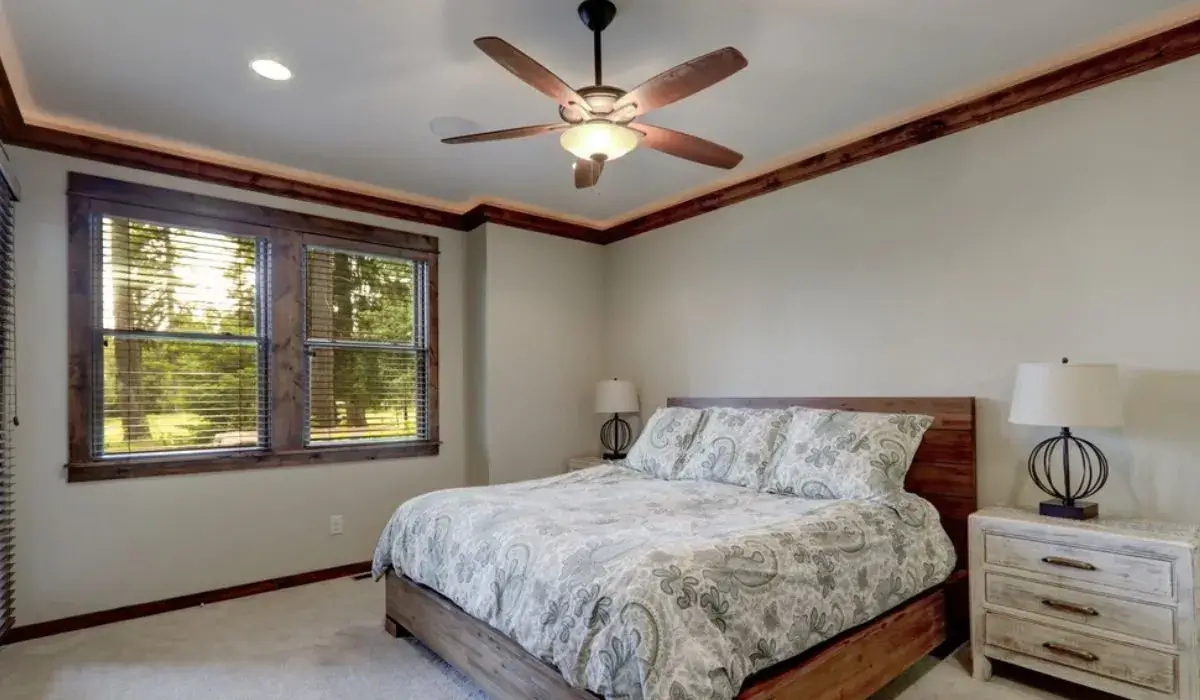The ideal size of a fan for a bedroom depends on the size of the room and the airflow preferences of the user. A general rule of thumb is to choose a fan that has a blade span (the diameter of the circle that the blades make when they rotate) that is proportional to the room size. For example, a small room of up to 75 square feet would need a fan with a blade span of 29 to 36 inches, while a large room of 225 to 400 square feet would need a fan with a blade span of 50 to 72 inches. However, other factors such as the ceiling height, the number of fans, the fan speed, and the fan direction can also affect the performance and comfort of a fan in a bedroom.
Why Use a Fan in a Bedroom?
Using a fan in a bedroom can have many benefits for the user, such as:
- Improving the air circulation and ventilation in the room, which can reduce the accumulation of dust, allergens, and odors.
- Creating a cooling effect by evaporating the sweat from the skin and lowering the body temperature.
- Saving energy and money by reducing the need for air conditioning or heating, especially in mild climates.
- Enhancing the sleep quality by creating a soothing white noise that can mask other disturbing sounds and promote relaxation.
How to Choose the Right Size Fan for a Bedroom?
To choose the right size fan for a bedroom, the user should consider the following steps:
- Measure the length and width of the room in feet and multiply them to get the area in square feet. For example, a room that is 10 feet by 12 feet has an area of 120 square feet.
- Refer to the table below to find the recommended blade span for the room size:
Table
| Room Size (Square Feet) | Blade Span (Inches) |
|---|---|
| Up to 75 | 29 to 36 |
| 76 to 144 | 36 to 42 |
| 144 to 225 | 44 to 50 |
| 225 to 400 | 50 to 72 |
| More than 400 | More than 72 |
- Adjust the blade span according to the ceiling height, the number of fans, the fan speed, and the fan direction. For example, a higher ceiling may require a larger blade span or a longer downrod (the rod that connects the fan to the ceiling) to achieve the optimal airflow. A smaller blade span may be sufficient if the user plans to install more than one fan in the room or use a higher fan speed. A reversible fan direction can also help to create a cooling or warming effect depending on the season.
How to Install and Maintain a Fan in a Bedroom?
To install and maintain a fan in a bedroom, the user should follow the manufacturer’s instructions and safety precautions. Some general tips are:
- Turn off the power supply and use a circuit tester to ensure that the wires are not live before installing the fan.
- Use the appropriate hardware and tools to secure the fan to the ceiling and avoid any wobbling or vibration.
- Clean the fan blades regularly with a soft cloth or a vacuum cleaner to remove any dust or dirt that can affect the fan performance and appearance.
- Lubricate the fan motor and bearings periodically with the recommended oil or grease to prevent any noise or wear and tear.
- Replace the fan blades or the fan motor if they are damaged or malfunctioning.
Conclusion
Choosing the right size fan for a bedroom can improve the comfort, health, and sleep quality of the user. The ideal size of a fan for a bedroom depends on the size of the room and the airflow preferences of the user. A general rule of thumb is to choose a fan that has a blade span that is proportional to the room size. However, other factors such as the ceiling height, the number of fans, the fan speed, and the fan direction can also affect the performance and comfort of a fan in a bedroom. The user should also follow the manufacturer’s instructions and safety precautions to install and maintain the fan in a bedroom.

